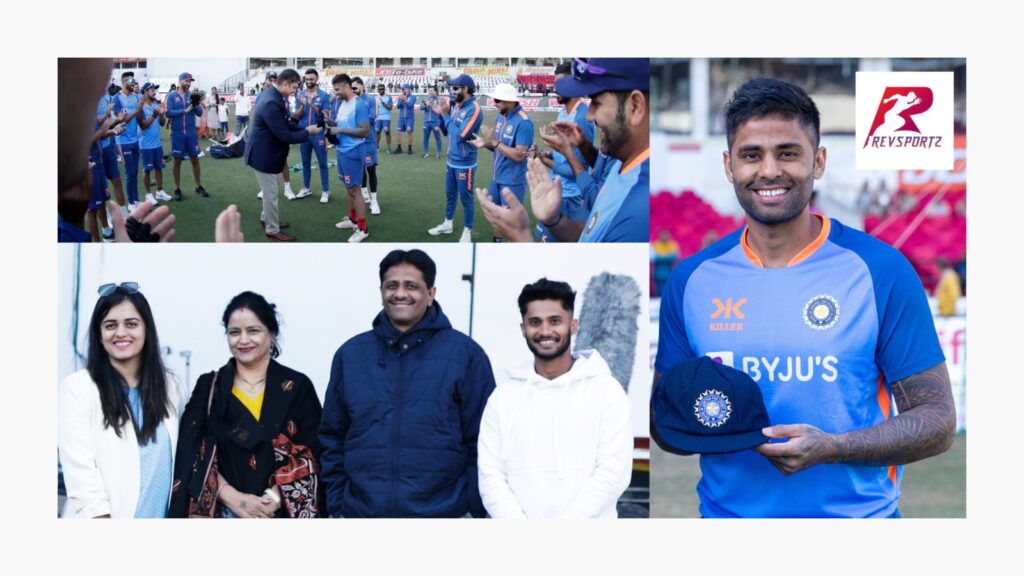Recent international form very much favoured Shubman Gill, while it’s hard to look past Sarfaraz Khan if first-class performances are the criteria for selection.
There are few tasks in sport more challenging than picking the playing side from a carefully assembled squad. Whichever way the captain and team management go, there will be criticism and unhappiness. There’s an old truism that a player always looks better in observers’ eyes when he or she isn’t playing. And it also can’t be denied that the think tank is privy to information – matters of form, confidence and personality – that the layman has no access to.
Even accounting for all those factors, India’s decision to go into the Nagpur Test without Shubman Gill in the XI is a head-scratcher. In his last 10 innings in international cricket, Gill has four centuries, including 208 in an ODI, and three other scores of 40 or more. But long before that phenomenal scoring streak, Indian cricket-watchers have known that Gill is the future.
What his recent golden run showed was that he can be the present as well. And it’s not just knee-jerk reactions from fans we’re talking about. There isn’t a cricket expert out there who doesn’t rate Gill, whether that’s the temperament he’s shown in a young career or the grace with which he plays his shots.
Rohit Sharma and Rahul Dravid, the captain-coach combination tasked with taking India to a second straight World Test Championship final, will justifiably point to the fact that KL Rahul has led the side in Rohit’s absence. It would have been a very big call to leave the vice-captain out, especially at the start of a series against a team that he scored six half-centuries against the last time they toured.
But that sequence of scores in February-March 2017, close on the heels of a beautiful 199 against England in Chennai, has been the anomaly in Rahul’s 45-Test career. He’s scored seven centuries in those eight years of long-form cricket, but an average of 34.26 says much about the chronic inconsistency in his performances.
For Rahul, the feasts have invariably been bookended by famines. In 2018, for example, he scored a sublime 149 at The Oval against England, but had just 319 runs in 21 other Test innings. And in 2022, he crossed 50 just once in eight Test knocks. His backers may argue that Virat Kohli and Cheteshwar Pujara have endured similar lean trots in recent seasons, but Rahul simply doesn’t have the same kind of credit in the bank. This series could well make or break his Test career.
Ultimately, India had to choose between Gill and Suryakumar Yadav. Yadav has become a cult figure in Indian cricket over the past couple of seasons, largely because of his exploits for India in T20 cricket. In a team that hadn’t changed with the times, he was the one whose imaginative strokeplay played a big part in India’s T20 reinvention.
But T20 and Test cricket are very very distant cousins at the best of times. Yadav has crossed 50 just twice in 18 ODI innings, and his average of 28.86 is not even in the same ballpark as Gill’s 73.76. It may not be fair to compare an opener and a middle-order batter, but what can’t be disputed is that Yadav is far from being a certainty in the 50-overs side.
He has 14 first-class hundreds at a decent average of 44.75, but has seldom been among the most consistent batsmen in the Ranji Trophy. If those displays were the criteria for India selection, then Sarfaraz Khan, who averages a staggering 79.65 after 37 first-class matches, would be a shoo-in for the squad. Even Gill’s numbers – nine hundreds and an average of 52.87 after 40 first-class outings – are significantly better.
Yadav played a telling innings of 95 for Mumbai in a low-scoring game in December, but it’s hard to otherwise understand the logic behind his selection. He hasn’t played enough long-form cricket or done enough in it to justify a place. And at 32 – only Naman Ojha, who was 39 when called up in 2015, was older when making his Test debut for India this century – he isn’t really an investment for the future.
Gill is 23, and Sarfaraz 25. Barring dramatic losses of form, both should be fixtures in the team for years. Yadav is the exciting face of the new-look T20 side, but his body of work outside that doesn’t really stand up to scrutiny. He’s an exuberant and likeable young man, and anyone who follows Indian cricket will hope he makes an impact on what looks a very testing pitch in Nagpur. But for now, it looks very much like a shot in the dark from the team management.




